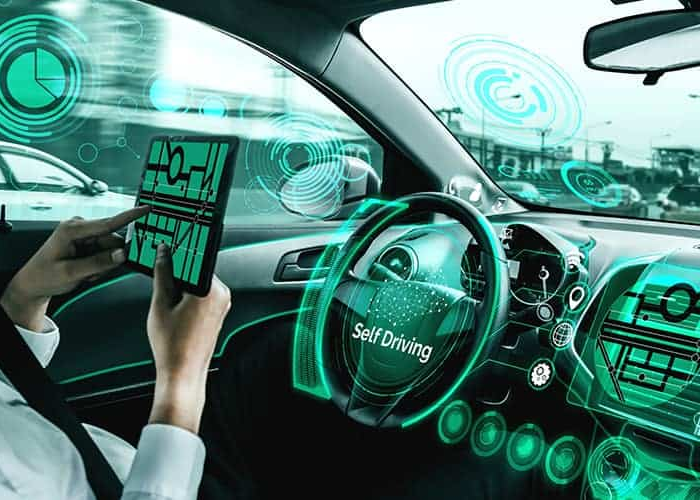
In the last few decades, the world has witnessed a monumental shift in the way machines and technology interact with the human world. Autonomous technologies, often referred to as “machines,” have risen to prominence across various industries, reshaping the landscape of transportation, manufacturing, healthcare, agriculture, and more. This profound transformation is a result of rapid advancements in artificial intelligence (AI), robotics, and sensor technologies, leading to the development of systems that can perform tasks without human intervention. This article takes a comprehensive look at the rise of autonomous technologies, their impact on society, benefits, challenges, and the path forward.
The Foundation of Autonomy: Artificial Intelligence and Robotics
Autonomous technologies are underpinned by two major pillars: artificial intelligence (AI) and robotics. AI involves the development of algorithms and models that enable machines to mimic human cognitive functions, such as learning, reasoning, problem-solving, and decision-making. Robotics, on the other hand, deals with the design, construction, and operation of robots that can physically interact with the world. The combination of AI and robotics has led to the creation of intelligent machines capable of navigating complex environments, making decisions based on data analysis, and adapting to new situations.
The Evolution of Autonomous Technologies
The journey of autonomous technologies can be traced back to early experiments with self-driving vehicles and industrial robots. However, significant advancements have been made over the past two decades due to the convergence of multiple technological breakthroughs:
Sensor Technologies
Sensors play a pivotal role in enabling autonomy by providing machines with real-time data about their surroundings. LiDAR (Light Detection and Ranging), cameras, radar, ultrasonic sensors, and GPS have become integral components for various autonomous systems. These sensors gather information, which is then processed by AI algorithms to make informed decisions.
Machine Learning and Deep Learning
The rise of autonomous technologies has been closely tied to the development of machine learning and deep learning techniques. These technologies enable machines to recognize patterns, learn from data, and improve their performance over time. Neural networks, particularly deep neural networks, have fueled the advancements in computer vision, natural language processing, and reinforcement learning.
Connectivity and Big Data
Autonomous technologies thrive on vast amounts of data. The proliferation of the Internet of Things (IoT) and the subsequent generation of big data have enabled machines to tap into real-time information from various sources. This connectivity enhances decision-making capabilities and facilitates remote monitoring and control.
Computing Power
The computational power needed to process the immense amount of data generated by autonomous systems has significantly increased. Advances in hardware, including Graphics Processing Units (GPUs) and specialized AI chips, have enabled faster and more efficient processing of complex algorithms.
The Impact of Autonomous Technologies
Transportation Revolution
One of the most visible impacts of autonomous technologies is in the transportation sector. Self-driving cars, trucks, and drones have the potential to reshape the way people and goods move. Autonomous vehicles promise increased safety by eliminating human error, reduced traffic congestion through optimized routing, and improved fuel efficiency.
Industry 4.0 and Manufacturing
In the manufacturing sector, autonomous robots are transforming the production process. Collaborative robots, or cobots, work alongside human operators to perform repetitive and dangerous tasks, leading to increased efficiency and decreased workplace accidents. Smart factories equipped with autonomous systems can adapt to changing demands and optimize production schedules.
Healthcare and Medical Innovations
Autonomous technologies have also found applications in the medical field. Surgical robots enable precise and minimally invasive procedures, reducing patient trauma and recovery times. Autonomous drones can deliver medical supplies to remote or disaster-stricken areas, saving lives by overcoming accessibility challenges.
Agriculture and Sustainability
Autonomous technologies are contributing to more sustainable agricultural practices. Drones equipped with sensors and cameras can monitor crop health, enabling targeted pesticide application and efficient resource allocation. Autonomous tractors and harvesters can work autonomously day and night, increasing productivity and reducing labor costs.
Challenges and Ethical Considerations
While the rise of autonomous technologies brings unprecedented benefits, it also presents a range of challenges that need careful consideration:
Safety and Reliability
Ensuring the safety and reliability of autonomous systems is paramount. Machine failures or misinterpretations of data can have catastrophic consequences, particularly in sectors like transportation and healthcare. Rigorous testing, redundancy, and fail-safe mechanisms are essential to mitigate these risks.
Data Privacy and Security
Autonomous technologies rely heavily on data collection and sharing. This raises concerns about the privacy of personal and sensitive information. There is a need to establish robust data protection measures and frameworks to prevent unauthorized access and misuse of data.
Job Disruption and Reskilling
The widespread adoption of autonomous technologies could lead to job displacement in certain sectors. As machines take over routine tasks, human workers might need to acquire new skills to remain relevant in the evolving job market. Governments, businesses, and educational institutions must collaborate to provide adequate reskilling and upskilling opportunities.
Ethical Decision-making
Autonomous technologies can face ethical dilemmas when making decisions in complex situations. For instance, self-driving cars might encounter situations where there’s no perfect outcome. Determining how machines should prioritize human safety, while also considering legal and ethical implications, is a challenge that requires careful consideration.
Legal and Regulatory Frameworks
The rapid advancement of autonomous technologies has outpaced the development of comprehensive legal and regulatory frameworks. Clarifying liability in case of accidents involving autonomous vehicles, establishing standards for data usage, and addressing issues of accountability are crucial steps for ensuring responsible deployment.
The Path Forward: Collaboration and Innovation
As society navigates the rise of autonomous technologies, collaboration and innovation will be key to harnessing their potential while addressing challenges. Here are some strategies for shaping the future of autonomy:
Interdisciplinary Collaboration
Autonomous technologies require input from diverse fields, including AI, robotics, ethics, law, and social sciences. Collaborative efforts between researchers, policymakers, industry experts, and ethicists can lead to well-rounded solutions that consider various perspectives.
Testbeds and Regulatory Sandboxes
Governments and industries should collaborate to establish controlled environments where autonomous technologies can be tested safely. These testbeds, often referred to as regulatory sandboxes, provide valuable data for refining algorithms and identifying potential risks.
Education and Training
Preparing the workforce for the age of autonomy requires comprehensive education and training programs. Schools, universities, and vocational training centers should adapt their curricula to equip students with skills in AI, robotics, data science, and ethics.
Ethical Frameworks and Standards
Developing ethical guidelines and technical standards is crucial for ensuring the responsible development and deployment of autonomous technologies. International cooperation can help establish common principles that guide the behavior of machines across borders.
Public Awareness and Engagement
Raising public awareness about autonomous technologies is essential for building trust and understanding. Engaging the public in discussions about the benefits, risks, and ethical considerations of autonomy can lead to informed decision-making.
Conclusion
The rise of autonomous technologies marks a significant turning point in human history. The convergence of AI, robotics, sensor technologies, and connectivity has ushered in a new era of innovation across industries. While the benefits of autonomy are undeniable, challenges related to safety, privacy, job displacement, ethics, and regulation require thoughtful solutions. By fostering interdisciplinary collaboration, embracing innovation, and establishing ethical frameworks, society can navigate the path forward and fully harness the potential of autonomous technologies while safeguarding the interests of humanity.







